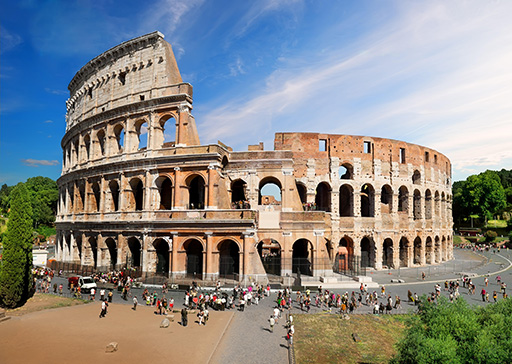1.1 The Colosseum in antiquity
The Colosseum has been one of the most iconic sights in Rome since it was built in the 70s CE. Work on this colossal amphitheatre began in 70 CE under the emperor Vespasian, forming part of his bold reconfiguration of the area of the city which had previously been occupied by the sprawling palace complex of the emperor Nero, the Domus Aurea (or ‘Golden House’). With Nero’s reign having ended (in 68 CE) in disgrace and scandal, it was in the interests of the new dynasty of emperors (the Flavians) to eradicate as many traces of their predecessor as possible – and what better way to signal their benevolence than by replacing the luxurious private dwelling of the emperor with a building dedicated to the entertainment of the masses?
The building that was most likely known in antiquity simply as ‘the Amphitheatre’ was finally completed and inaugurated in 80 CE, in the reign of Vespasian’s son Titus. Now, for the first time, Rome had a permanent central and monumental location in which around 50,000 people at a time could enjoy the spectacular shows of the arena, including gladiatorial games, animal hunts, and perhaps even mock sea-battles; as well as public execution of criminals. The purpose of the amphitheatre was not solely entertainment, though; it also provided the emperor with an important political tool. As well as winning popular favour by putting on games, it was a place in which he could appear in front of the people, rather than being largely set apart from them in his elite residence. Gladiatorial combat was also a way of asserting the specific qualities of Roman identity, particularly their military prowess, virtue and valour.

